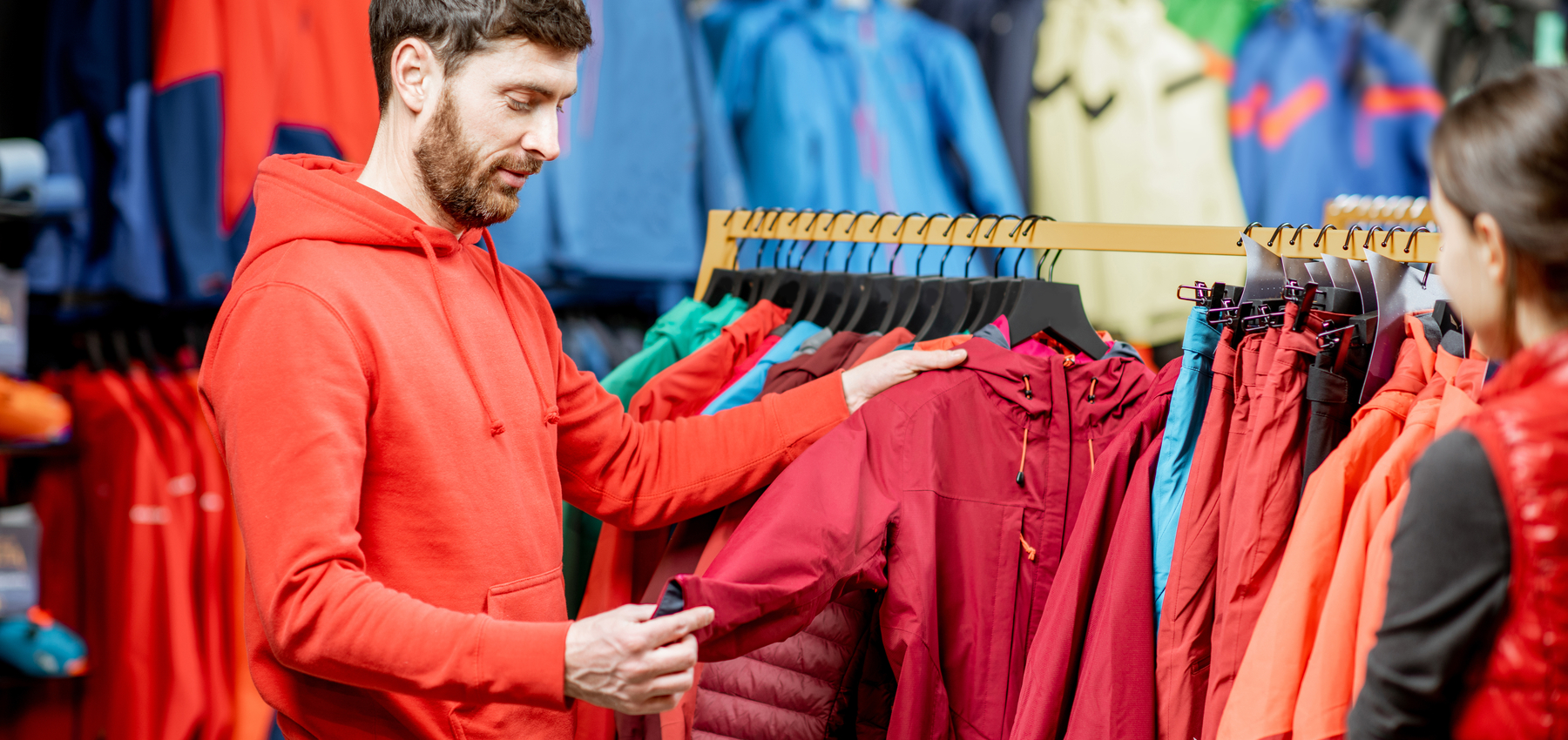Canada is often referred to as a cold country or “the great white north.” During winter, many regions experience temperatures well below freezing (think -40 degrees Celsius) and snow blizzards. Wind chills are often responsible for the temperatures feeling lower than what you see on the weather app. For instance, the weather app may show you that it’s going to be -20 degrees Celsius, but it will also indicate that it “feels like” -30 degrees Celsius.
Even bright and sunny days in the middle of winter can be extremely cold. Weather is also one of the reasons why many newcomers decide to make their move during the spring or summer months. For those coming from tropical or temperate climates, even fall temperatures can seem very cold. But don’t let all of this scare you! Getting through your first winter in Canada can be an enjoyable experience if you’re well prepared. In this article, we will walk you through the basics of fall and winter shopping in Canada so you can stay warm and make the most of your first Canadian winter.
Getting familiar with fall and winter wear basics
Before you venture out into the world of heavy coats, down jackets, and snow boots, let’s get to know some fall/winter basics. The key to staying warm and safe is all about choosing clothes that suit your level of activity during the day.

Key to staying warm: Dress in layers
First layer or base layer: You should purchase some thermal innerwear to use as your first layer. Base layers trap body heat and help you stay warm. It’s not advisable to use jeans as the first layer in cold weather; instead, buy a pair of warm leggings for the base layer. Choose materials such as silk, lycra, nylon, and polyester as they repel moisture and help preserve the warmth. Cotton isn’t recommended as it tends to absorb sweat, which will make you feel cold.
Second or middle layer: The next layer of clothing can be your regular clothes or woollen wear or a combination of both, depending on the outside temperature. In extremely cold weather, you should treat this as your insulating layer. Flannel, fleece, or wool are good insulators as they trap heat. Add as many second layers as you’d like, t-shirts, shirts, blouses, sweaters, hoodies, vests, or puff jackets – so that you stay warm and comfortable.
Tip: Wearing multiple thin layers allows you to better adjust to the environment you’re in. For example, when you’re indoors, if you feel hot, you can easily remove a layer or two and put them on before stepping out.
Third layer or outer layer: This is dependent on the outside temperature and helps protect you from snow, wind, and rain. During fall, you may just need a light coat or a denim or a leather jacket, while during winter, you may have to wear a heavy down jacket or winter coat.
Accessories for hands, neck, head, and feet
When you step out in the cold, bundling-up and covering your whole body is essential to avoid getting hypothermia and frostbite.
Here are some common must-have fall/winter clothing accessories:
- For hands: Gloves or mittens;
- For neck: Scarf or neck warmers;
- For feet: Socks that are made from wool or wool blend with silk or polypropylene;
- For head and ears: Hat, toque, beanie, and/or ear muffs;
Tips:
- Choose gloves, toques, and beanies with lining, so it protects you from cold. Knitted accessories look stylish but aren’t very effective in the cold. You can also buy touchscreen gloves, which allows you to use your phone without taking them off.
- You can buy hand warmers or toe warmers; they are slightly expensive but very effective in keeping you warm.
- If you have kids, label all their coats and accessories as they tend to get mixed up in a pile when kids go indoors.
- Don’t wear anything metal such as rings, bangles, watches etc. on exposed skin as it’s likely to cause frostbite due to the metal being a cold conductor.
Coats and jackets
Coats and jackets are items you will wear almost every day during fall and winter. So be sure to pick comfortable ones and look for certain features like cuffs that can be tightened and a hood that fits over your hat. Having a hood is essential to protect yourself from wind chills. Fur lining can be helpful too. These days many winter jackets come labelled with temperature ratings, but it’s better not to rely solely on those ratings as they can be subjective. Don’t hesitate to ask the sales associate for guidance. Good quality jackets (such as ones with down filling) tend to be expensive, but it’s worthwhile to treat it as an investment as you will be using the jackets for many years.
Footwear
Walking on snow and ice can be tricky and dangerous. Sidewalks and roads can even get icy during winter. That’s why having a pair of good winter boots that are warm, slip-resistant, and waterproof are essential. Remember, damp socks can give you frostbite, so always carry an extra pair with you. During the fall season, however, regular ankle-length boots paired with socks may suffice to keep you warm.
Unless you have heated floors in your home, the flooring can get very cold during winter. Since Canadians leave their shoes at the door, having a pair of indoor slippers or using thick socks will help you stay warm.
Tips:
- Look for winter boots with removable liners. It will enable you to remove them when they get wet and allow for easy drying.
- Beware of black ice or clear ice – the cause of many road accidents and personal injuries in Canada. Black ice is a thin layer of glaze ice on roads and sidewalks. Metal/rubber grippers (known as crampons) that can easily be attached to the soles and sides of your shoes or boots work well to avoid slipping on such icy roads. They’re light and small enough to store in a Ziploc bag after use.
Outdoor winter gear for babies
A snowsuit or bunting is a great outfit to protect your baby against the cold and snow. Snowsuits have form-fitting legs and arms, and most are equipped with hoods. Buntings are more like little sleeping bags, with a seam between the legs to make stroller snap-ins easier.
To keep your baby close to your body and avoid bundling them in a snowsuit, you can use a baby carrier. A baby carrier is placed between your own jackets, using jacket extenders.
If you plan to take your baby out regularly during winter, it might be worth investing in a fuzzy seat liner for the stroller or get a stroller muff that will provide extra bottom warmth. When buying a stroller, look for ones with bigger wheels that offer great all-terrain capability and check out the specially made covers to protect your baby from rain, snow, and wind.
Where and when to buy fall and winter clothing?
Many newcomers planning to arrive in Canada during fall or winter tend to go shopping for winter wear in their home countries. While it’s advisable to purchase some essentials to get through the initial days, you will find more variety and have access to clothing and accessories that are specifically built to withstand Canadian weather if you buy your winter gear in Canada. This is especially true if you’re moving from temperate or tropical countries.
In Canada, all popular retailers and brands have sales at the start and end of seasons. The Canadian Thanksgiving weekend in October, as well as the Black Friday weekend in November, are also popular times to find great deals. You can sign up for newsletters and mailers from your preferred brands or retailers and stay up-to-date on all upcoming sales.
|
Download Ampli and earn cash back as you shop! Ampli is available for free on the App Store and Google Play. Download it now! |
Canadian weather can be unpredictable and sometimes fluctuate throughout the day. Be sure to download a weather app and check weather forecasts daily, so you know what to expect and can plan your outfits accordingly. Environment Canada’s weather app, WeatherCAN, provides the latest forecast information directly from Canada’s official weather source; it is available as a free download for iOS and Android. Surviving the Canadian winters may seem scary, but with the right knowledge, preparation, and most importantly, the right clothing, you will be able to enjoy the fall and winter seasons like a Canadian!





